Deep Convolutional GANs
Outline:
DCGAN Architecture
- DCGAN
- Use deep convolutional networks for the generator and the discriminator.
- Otherwise it’s the same as GAN
- The generator is trying to fool the discriminator with fake images
- That means we need to upsample the input vector to make a layer with the same shape as the real images.
- In an auto-encoder, where we re-sized a layer with nearest neighbor interpolation
- For this GAN model, to use transposed convolutions
- The discriminator is trying to properly classify images as real or fake.
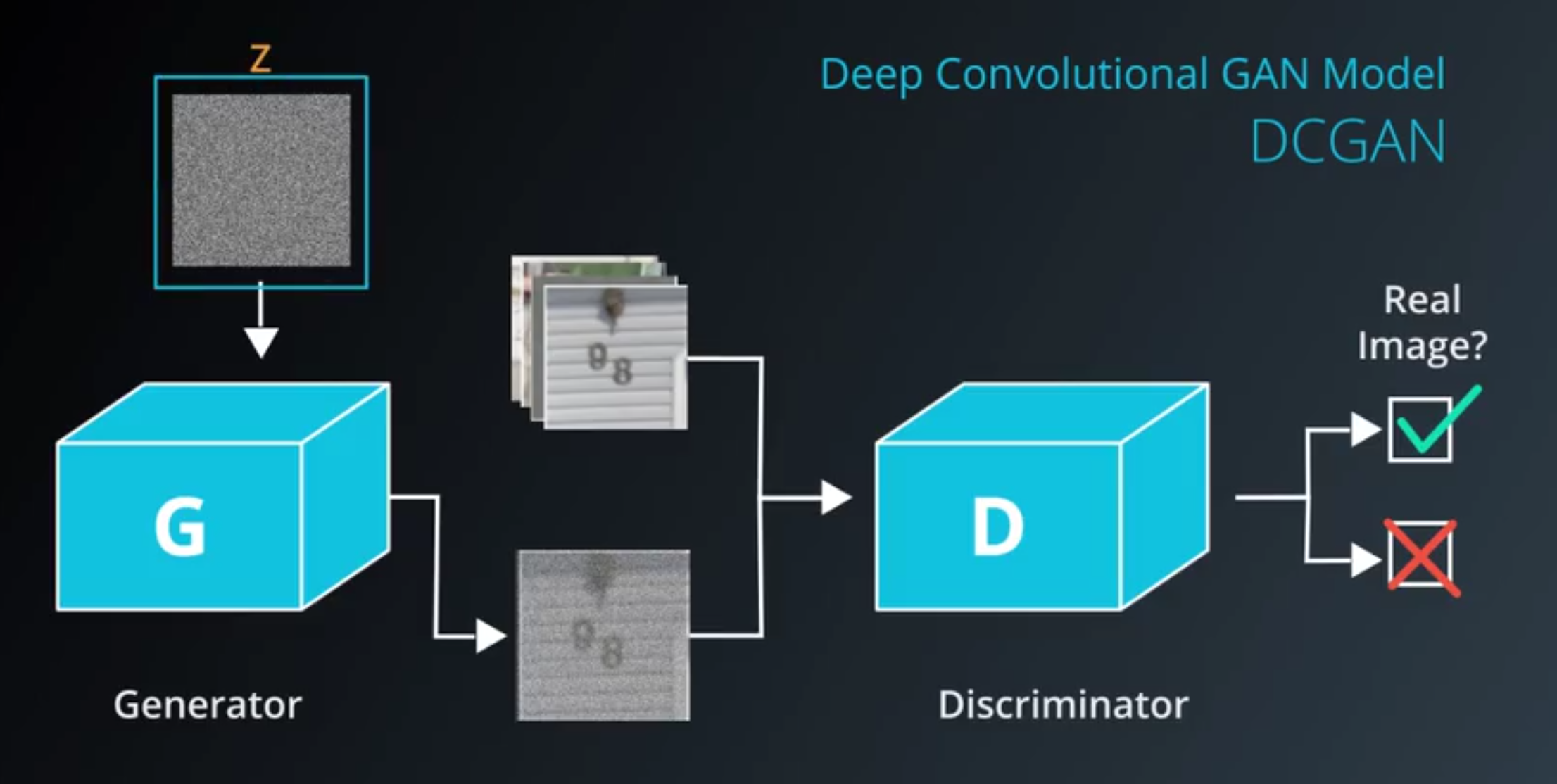
- Transposed convolutions
- similar to the convolutions, but flipped
- go from narrow and deep to wide and flat.
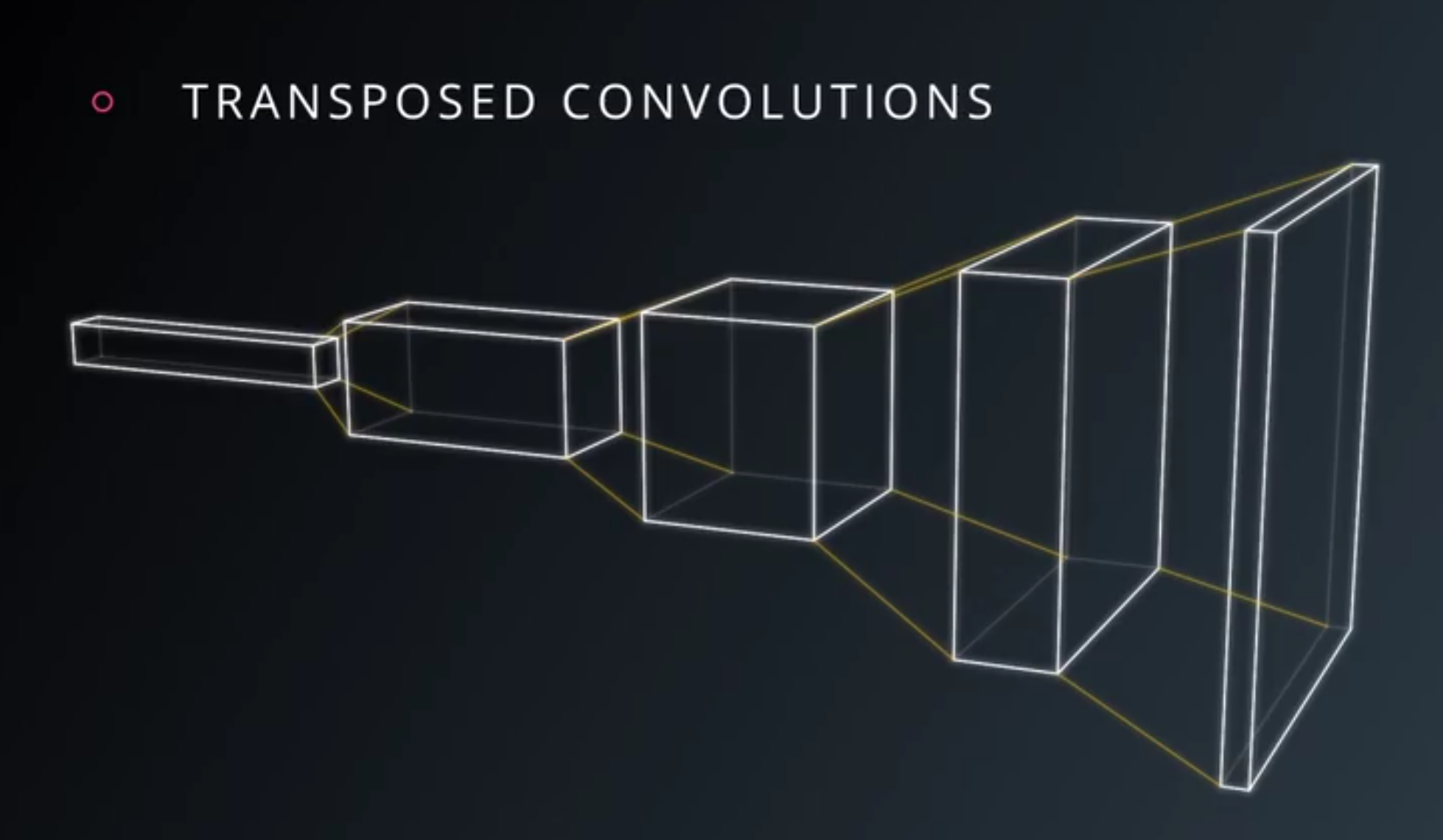
- When you move the kernel 1 pixel in the input layer, the patch moves 2 pixels and the output layer.
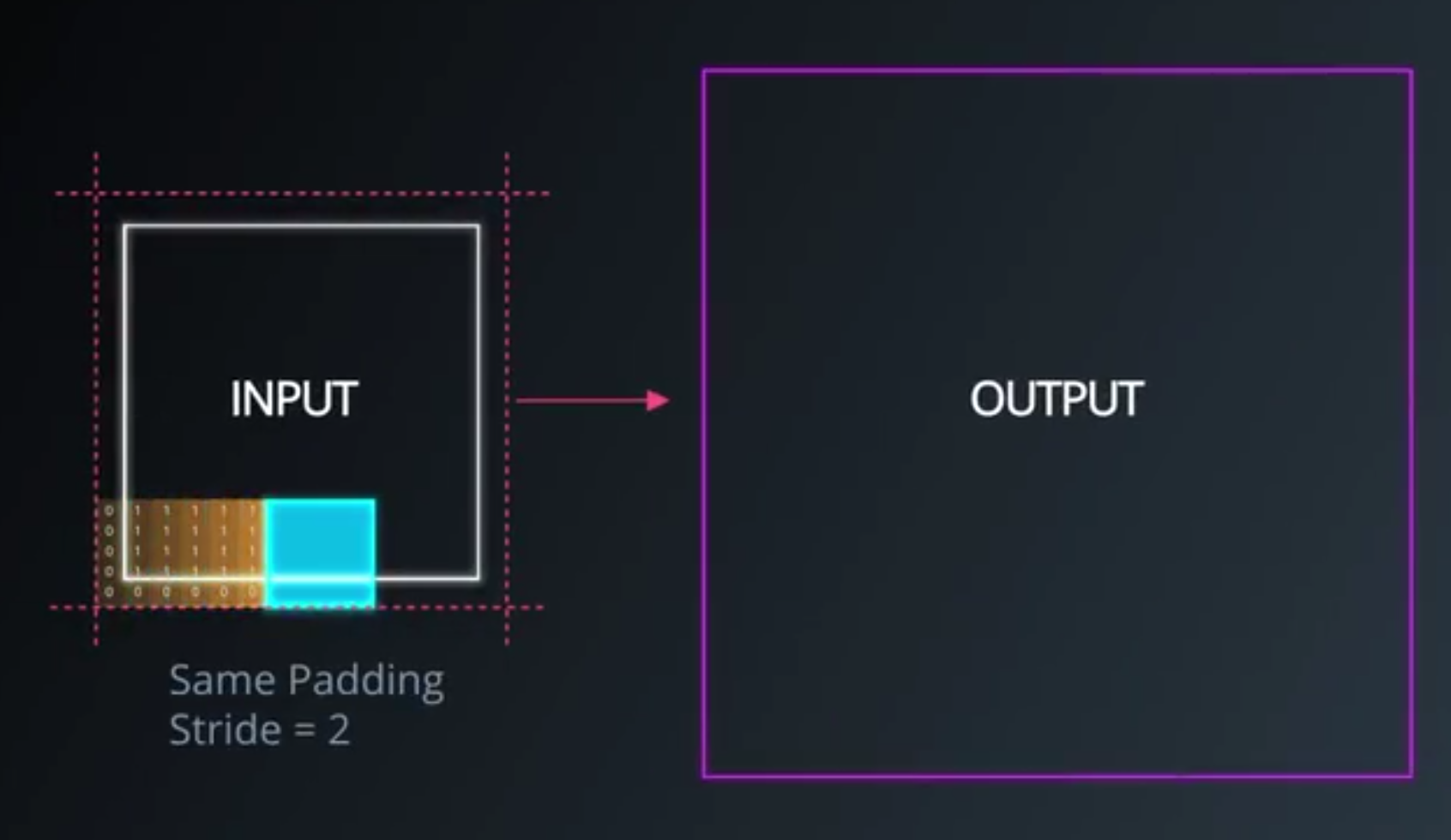
- DCGAN generator
- The first step is to connect the input vector z to a fully connected layer
- then reshape the fully connected layer to whatever depth you have for this first layer.
- Then we build this stack of layers by upsampling with transposed convolution.
- The final layer, the output of the generator, convolutional layer.
- The size of this layer is actually whatever the size of your real images.
- There are no max pool or fully connected layers in the network, just convolutions.
- The new layer size depends on the stride.
- In the generator we can use ReLU and batch normalization activations for each layer
- Batch normalization scales the layer inputs to have a mean of and variance of .
- This helps the network train faster, and reduces problems due to poor parameter initialization.
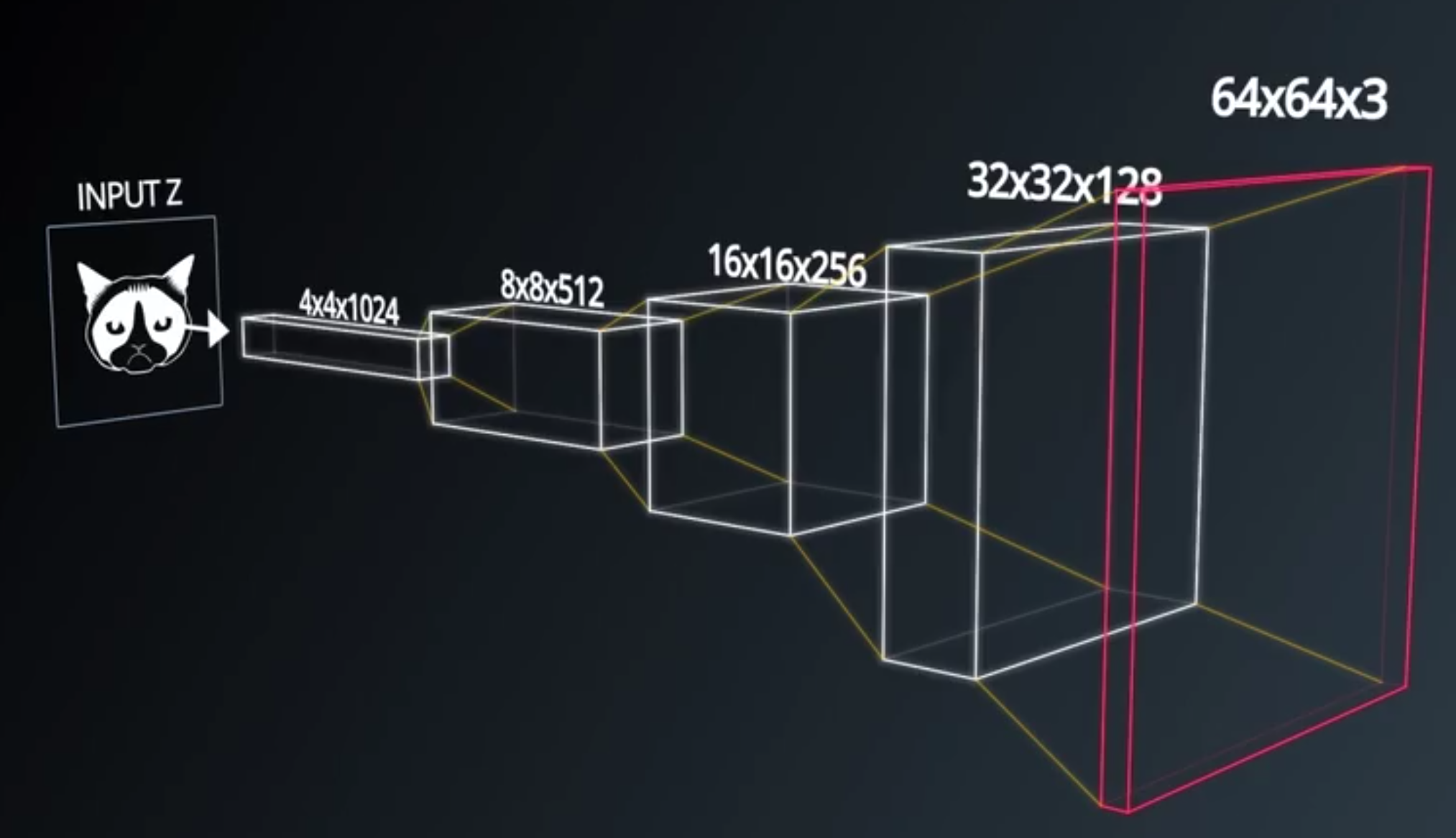
- DCGAN discriminator
- The discriminator is a convolutional network
- with one fully connected layer at the end, used as the sigmoid output.
- there are no max pool layers.
- The downsampling is done completely with the strided convolutional layers.
- The final convolutional layer is flattened, then connected to a single sigmoid unit.
- Again, the layers have leaky ReLU activations and batch normalization on the inputs.
- The discriminator is a convolutional network
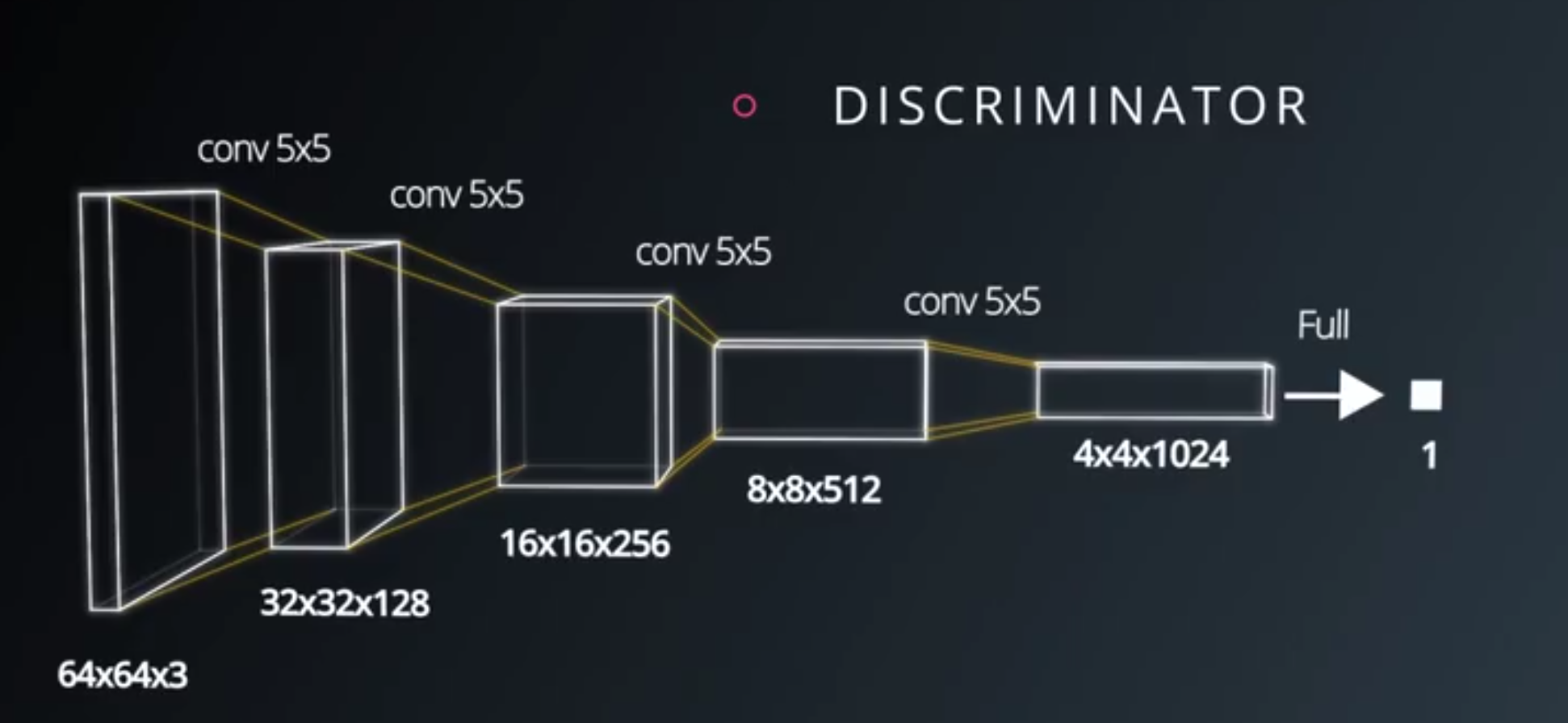
Batch Normalization
- Batch normalization is a
- technique for improving the performance and stability of neural networks.
- The idea is
- to normalize the layer inputs such that they have a mean of zero and variance of one, much like how we standardize the inputs to networks.
- Batch normalization is necessary to make DCGANs work.
- Scratch from Jupyter notebook